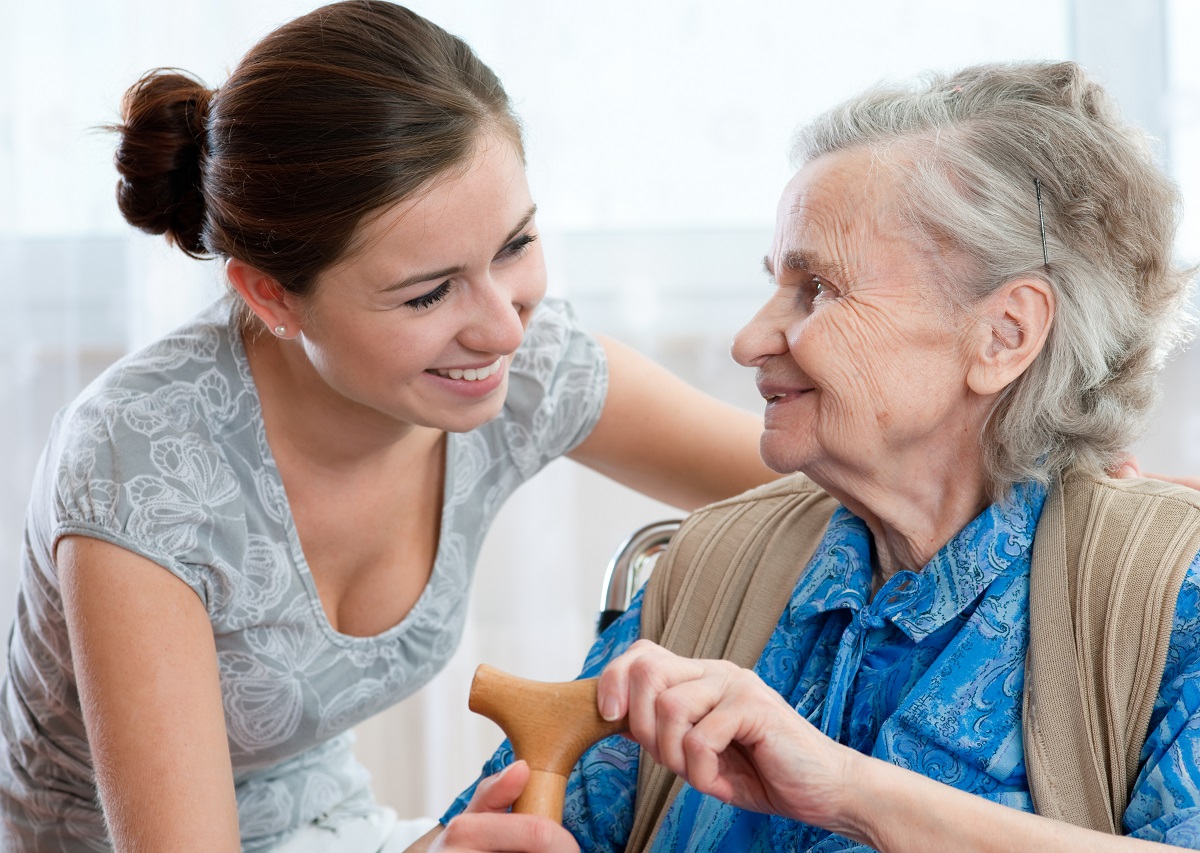In the second part of her blog about eye health and dementia, Dr Marianne Coleman, Orthoptist and Vision Researcher, explains some of the visual difficulties people with dementia can experience
Visual hallucinations
Some forms of dementia, such as Dementia with Lewy Bodies, Alzheimer’s Disease and Frontotemporal Dementia, can be more frequently associated with visual hallucinations. These are separate from the visual hallucinations experienced by people living with sight loss, which are known as Charles Bonnet Syndrome. But they can occur together, and the drugless management options for them have some overlap:
Charities for Charles Bonnet Syndrome, like Esme’s Umbrella, publish stories from people about what life is like living with these hallucinations, and can give a little insight into what this is like.
Object localisation and identification
Posterior cortical atrophy is a type of dementia that affects primarily the visual areas of the brain, and the processing streams in the brain that deal with visual objects. This leads to some rather profound difficulties in reading, and locating or identifying visual objects, even when an NHS sight test reveals no obvious problems. This is because the eyes themselves are okay, and it’s the way that the brain processes the input from the eyes that is affected. To get just a glimpse of what this is like, you can watch this video:
This can be really frustrating to live with, and the experience is unique to each person. Ophthalmologists can make a ‘Referral of Vision Impairment’ for social needs assessment even without the person having met the traditional criteria for blind or partially sighted registration, so getting one of these in place early on can be helpful for accessing sight loss services, as some of the strategies and low vision aids that help people with sight loss can also be helpful for people living with posterior cortical atrophy.
If you’d like more info about the posterior cortical atrophy and vision impairment research happening at University College London, check out their news page here:
Processing complex visual scenes
People with some types of dementia, such as Alzheimer’s Disease, can also experience difficulties with processing complex visual images, such as dense patterns, or lots of clutter. Almost a ‘not seeing the wood for the trees’ thing. Limiting patterned fabrics, keeping floors and surfaces clear, and swapping patterned carpets or linoleum for plain onescan help with navigation and recognition, as well as reducing fall risk.
Depth perception
It’s quite commonly reported that some types of dementia, particularly Alzheimer’s Disease, are associated with ability to judge distances (depth perception). This might be due to shrinkage or lesions in the parts of the brain responsible for depth perception, but it’s not that well understood.
Also, people are more likely to develop problems with using their eyes together as they age, due to changes in eye muscle control. These problems can actually be treated by an optometrist or through the hospital eye service, unlike the loss of depth perception associated with changes in the brain.
Problems with depth perception can increase risk of having a fall, so it’s important to keep an eye out for steps, kerbs, obstacles and so on when helping a person with dementia to navigate – they may need extra support when encountering these.
Motion perception
Lastly, some people with dementia, particularly Alzheimer’s Disease and posterior cortical atrophy, can also experience difficulties with their motion perception. For example, objects moving past the person while they are also moving, which is known as optic flow, or the ‘Star Wars’ phenomenon:
This is one of the reasons why some people with dementia may have particular issues with escalators – they are moving, and so is the escalator, and it’s really difficult for them to judge what’s going on. This can also apply to things like oncoming traffic or streams of people.
Minimising exposure to these situations can help reduce anxiety and disorientation associated with these kinds of moving objects.
Some age-related causes of sight loss, such as cataract, are more common in people with dementia than in the general population of older people.
Many common sight conditions associated with getting older can be detected and monitored through the NHS sight test, so make sure a person with dementia receives one every two years if they are under 70, and yearly if they are over 70.
More than 80% of people with dementia are able to participate in key parts of the eye examination – so even if dementia is severe, it is still worth doing the test. The eye examination can be done in the home through a ‘domiciliary visit’ if the person is unable to attend a high street optometrist appointment alone.
Make sure you mention dementia when making any eye appointment with the optometrists or hospital, so they are aware and can allow extra time for testing. Both the College of Optometrists and the Royal College of Ophthalmologists have guidelines for testing people with dementia, and tests can be adapted to account for the difficulties people with dementia may have with telling eyecare professionals about what they’re seeing.
Tips and Tricks Summary
1. Ensure eye test is booked once a year for people with dementia aged 70 and above, and once every two years for people with dementia aged under 70. You can book another sooner if you have concerns e.g. dry eye symptoms or other signs of sight loss.
2. Tell the eyecare professional about the dementia diagnosis when making the appointment.
3. High contrast tableware, toilet seats, light switches, hand rails etc. may help make these items easier for people with dementia to detect.
4. Ensuring the house is well lit throughout and a good reading lamp is available may also help to combat contrast vision problems experienced by people with dementia.
5. Use an eye shield to help with administration of eye drops for dry eyes or glaucoma and speak to your optometrist for more tips and tricks for getting drops into the eye effectively.
6. Label spectacle frames with what they are to be used for (e.g. reading, TV, old glasses/do not use) – your optometrist can help, some domiciliary services will even engrave frames for you.
7. Wear CE-marked sunglasses outdoors when the UV index is high or it’s sunny.
8. Ask about low vision aids at your local optometrist or call the RNIB helpline for information on how to make the best use of remaining eyesight.
9. Watch out for steps, kerbs and other obstacles when helping a person with dementia to navigate – they may need extra help and support due to changes in their depth perception.
10. Keep Charles Bonnet syndrome in the back of your mind if your loved one is experiencing hallucinations and already has sight loss.
11. A ‘Referral of Vision Impairment’ can be done by an ophthalmologist even where the standard criteria for blind or partially sighted registration have not been met.
12. Avoid too much exposure to visual clutter, complex patterns and fast, oncoming motion to reduce feelings of disorientation and associated anxiety.
SHARE
Explore more




